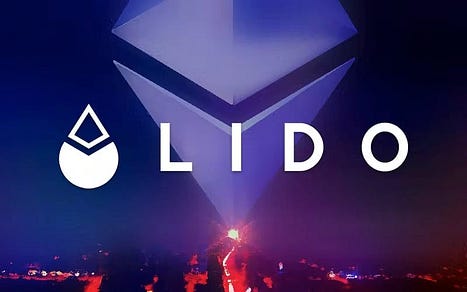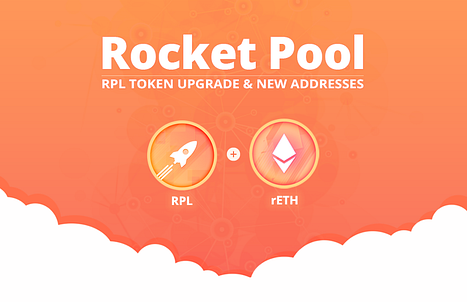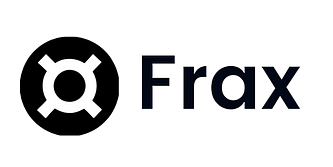Top 5 DePIN Altcoins With 100x Profits
Top 5 DePIN Altcoins With 100x Profits
In the ever-evolving landscape of decentralized finance (DeFi), identifying the next big opportunity can be a daunting task. However, for those willing to venture off the beaten path, the potential rewards can be extraordinary. In this article, we’ll explore five DeFi altcoins that have the potential to deliver 100x profits, making them a compelling investment proposition for risk-tolerant investors.
These altcoins, known for their innovative features and strong fundamentals, have caught the attention of the DeFi community. From decentralized lending protocols to yield farming platforms, each of these projects offers a unique value proposition that sets them apart from the competition. While the DeFi market is known for its volatility, it also presents a wealth of opportunities for savvy investors. By carefully researching and selecting promising altcoins, investors can position themselves to capitalize on the growth potential of the DeFi ecosystem.
While the DeFi market is known for its volatility, it also presents a wealth of opportunities for savvy investors. By carefully researching and selecting promising altcoins, investors can position themselves to capitalize on the growth potential of the DeFi ecosystem.
Join us as we delve into the world of DeFi and uncover the top five altcoins that could potentially deliver 100x profits in the near future.
What is DePin?
DePin stands for “Decentralized Predictions,” a concept within the realm of decentralized finance (DeFi) that focuses on using blockchain technology to facilitate prediction markets. These markets allow users to bet on the outcomes of future events, such as the price of a particular asset or the winner of a sports event, using cryptocurrency.
DePin platforms operate without a central authority, relying instead on smart contracts to automate the process of placing bets and distributing rewards. By harnessing the wisdom of the crowd, DePin platforms aim to provide more accurate predictions than traditional methods.
Overall, DePin represents an innovative approach to prediction markets, offering users the opportunity to profit from their insights while contributing to a decentralized ecosystem.
Top 5 DePIN Altcoins
1. Lido (LDO)
Lido is a decentralized staking platform that allows users to stake their ETH tokens without locking them up for an extended period. LDO is the native token of the Lido protocol and is used for governance and fee discounts.
Lido was launched in December 2020 by a team of developers with experience in the blockchain and cryptocurrency industry. The platform quickly gained popularity and has become one of the leading staking platforms in the world.
Lido works by allowing users to deposit their ETH tokens into a staking pool. The pool is then staked on the Ethereum network by Lido’s validators. Users receive staking rewards in the form of stETH tokens, which are a representation of their staked ETH and staking rewards.
stETH tokens can be used to trade, lend, or borrow on other decentralized finance (DeFi) platforms. This allows users to earn additional yield on their staked ETH tokens.
LDO is the native token of the Lido protocol and is used for governance and fee discounts. LDO holders can participate in the Lido DAO, which is responsible for making decisions about the future of the protocol. LDO holders can also stake their LDO tokens to earn staking rewards.
Lido is a popular choice for users who want to stake their ETH tokens without locking them up for an extended period. The platform offers a number of features that make it a user-friendly and secure way to stake ETH.
Some of the key features of Lido include:
- Non-custodial staking: Users retain custody of their ETH tokens when they stake them on Lido.
- Liquid staking: Users can receive stETH tokens, which can be used to trade, lend, or borrow on other DeFi platforms.
- Low fees: Lido charges low fees for staking ETH.
- Decentralized: Lido is a decentralized protocol, which means that it is not controlled by any single entity.
Lido is a popular choice for users who want to stake their ETH tokens in a secure and user-friendly way. The platform offers a number of features that make it a good option for users who want to earn staking rewards on their ETH tokens.
2. Rocket Pool (RPL)
 Rocket Pool (RPL) is another prominent contender in the DePIN space, offering decentralized Ethereum staking with unique features compared to Lido. Here’s a breakdown of its key characteristics:
Rocket Pool (RPL) is another prominent contender in the DePIN space, offering decentralized Ethereum staking with unique features compared to Lido. Here’s a breakdown of its key characteristics:
Key Features:
- Minimum stake: Unlike Lido’s 10 ETH minimum, Rocket Pool allows participation with as little as 0.01 ETH. This makes it more accessible to smaller investors.
- Decentralized node operators: Instead of relying on its own validators, Rocket Pool incentivizes individuals to run independent node operators. This distributes trust and security across the network.
- Smart node software: Rocket Pool offers custom “smart node” software, simplifying node operation for participants.
- Liquid staking: Similar to Lido, you receive rETH tokens representing your staked ETH and earned rewards. These tokens are liquid and can be used in DeFi protocols.
- Governance token: RPL token serves as the governance token, allowing holders to vote on protocol decisions.
- Higher potential returns: Node operators can earn additional RPL rewards on top of staking rewards, potentially leading to higher returns compared to Lido.
3. Frax Share (FXS)
 Frax Share (FXS) is a unique player in the DePIN space, deviating from pure ETH staking protocols like Lido and Rocket Pool. Here’s a breakdown of its key features and how it distinguishes itself:
Frax Share (FXS) is a unique player in the DePIN space, deviating from pure ETH staking protocols like Lido and Rocket Pool. Here’s a breakdown of its key features and how it distinguishes itself:
Purpose:
- FXS is not directly involved in ETH staking. Instead, it governs the Frax ecosystem, a broader infrastructure focused on creating a partially algorithmic stablecoin called FRAX.
FRAX Stablecoin:
- Aims to maintain a peg of $1 through a combination of algorithms and collateral backing.
- Algorithms adjust the supply of FRAX based on market demand, expanding or contracting to bring its price back to $1.
- Collateral can include various assets, not just ETH, providing diversification and flexibility.
4. Synthetix (SNX)
 Synthetix (SNX) stands as another prominent DePIN player, offering a flexible platform for creating and trading diverse synthetic assets. Here’s a breakdown of its core features and strengths:
Synthetix (SNX) stands as another prominent DePIN player, offering a flexible platform for creating and trading diverse synthetic assets. Here’s a breakdown of its core features and strengths:
Key Features:
- Wide range of Synths: Synthetix allows users to mint synthetic versions of various asset classes, including:
- Cryptocurrencies (e.g., sBTC, sETH)
2. Commodities (e.g., sGold, sOil)
3. Fiat currencies (e.g., sUSD, sEUR)
4. Stock indices (e.g., sSPX, sNDX)
5. Inverse assets (e.g., sShortBTC, sInverseETH)
- Decentralized exchange: Offers a user-friendly interface for trading different Synths directly on the platform.
- Collateralization: Synths are backed by SNX tokens locked in a collateral pool, ensuring their value stability.
- Governance and fee sharing: SNX holders can participate in platform governance and earn rewards from trading fees.
Strengths:
- Highly versatile: Synthetix caters to diverse trading strategies and investment preferences with its vast array of Synths.
- Transparent: The collateralization system fosters trust and helps maintain synthetic asset prices.
- Active community: Synthetix boasts a dedicated community actively contributing to its development.
UMA (UMA)
 UMA (Universal Market Access) is a decentralized financial (DeFi) protocol that allows users to create and trade synthetic assets without the need for a centralized oracle. UMA is unique in that it uses a decentralized price discovery mechanism called the Optimistic Oracle to determine the prices of synthetic assets.
UMA (Universal Market Access) is a decentralized financial (DeFi) protocol that allows users to create and trade synthetic assets without the need for a centralized oracle. UMA is unique in that it uses a decentralized price discovery mechanism called the Optimistic Oracle to determine the prices of synthetic assets.
Key Features:
- Decentralized price discovery: The Optimistic Oracle uses a game-theoretic mechanism to incentivize honest price reporting from participants, eliminating the need for a centralized oracle.
- Wide range of synthetic assets: UMA supports a variety of synthetic assets, including cryptocurrencies, fiat currencies, commodities, and stocks.
- Flexible contract terms: Users can create synthetic assets with customized terms, such as maturity date, strike price, and collateral requirements.
- Capital-efficient: UMA’s design allows for capital-efficient synthetic asset creation, as users only need to collateralize a portion of the asset’s value.
Strengths:
- Trustless: UMA’s decentralized price discovery mechanism eliminates the need for a trusted third party, making it more resistant to censorship and manipulation.
- Flexible: UMA’s flexible contract terms allow users to create synthetic assets that meet their specific needs.
- Capital-efficient: UMA’s capital-efficient design makes it more accessible to users with limited capital.
UMA is a promising DeFi protocol that offers a unique solution for synthetic asset creation and trading. However, it is important to be aware of the risks involved before using UMA.
Conclusion
In conclusion, the world of decentralized finance offers a myriad of opportunities for investors seeking high returns. The five DeFi altcoins we’ve discussed have shown promise in delivering significant profits, but it’s important to approach these investments with caution and do thorough research before diving in.
While the potential for 100x profits is certainly enticing, it’s crucial to remember that the DeFi market is highly volatile and unpredictable. Prices can fluctuate wildly in a short period, and investing in altcoins carries inherent risks.
That said, for those willing to take the risk, the potential rewards can be substantial. By staying informed, keeping a close eye on market trends, and diversifying their portfolios, investors can increase their chances of success in the DeFi space.
As always, it’s advisable to consult with a financial advisor before making any investment decisions. With careful planning and a bit of luck, investing in DeFi altcoins could prove to be a lucrative opportunity for those with a high risk tolerance.
































